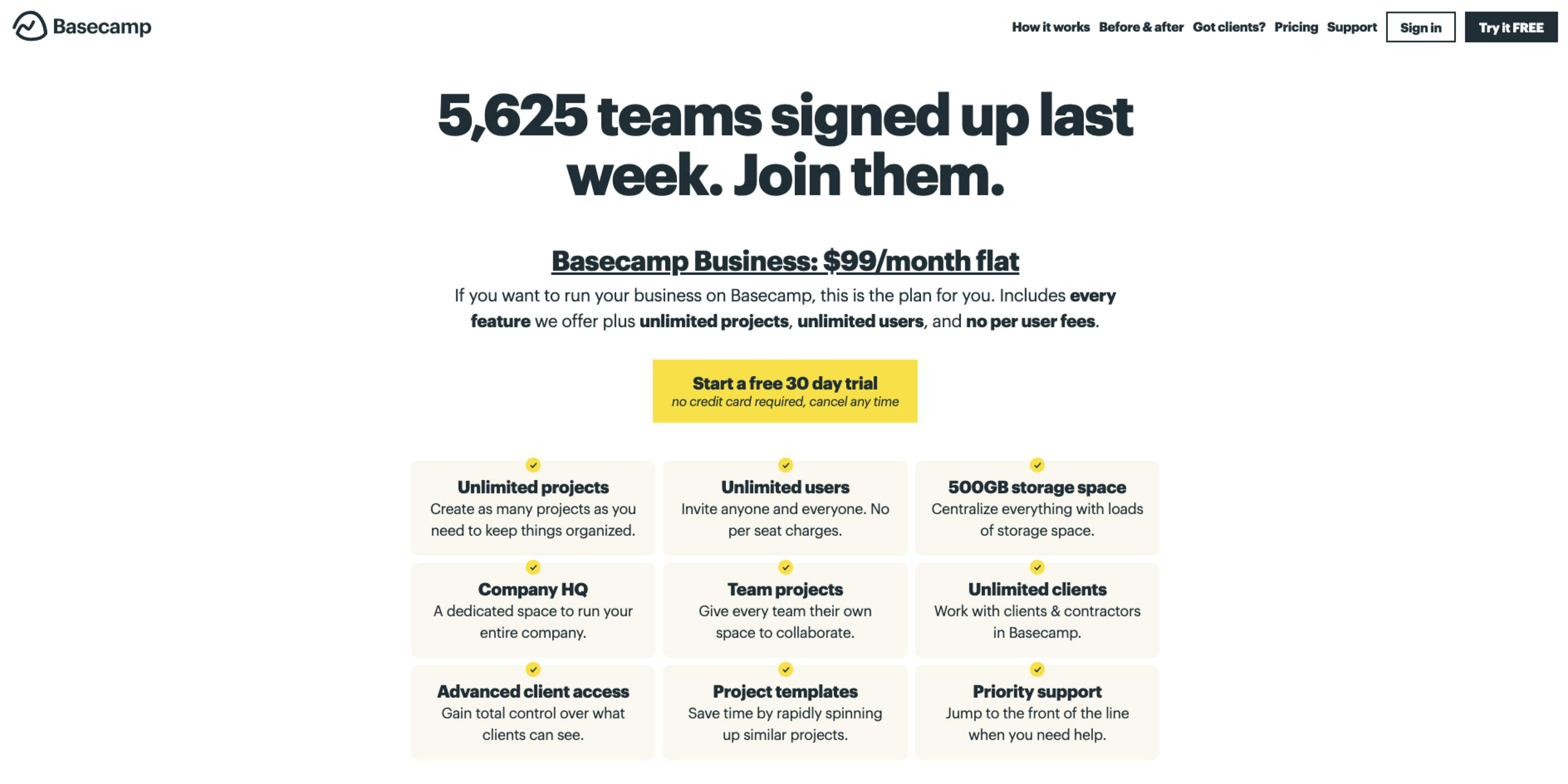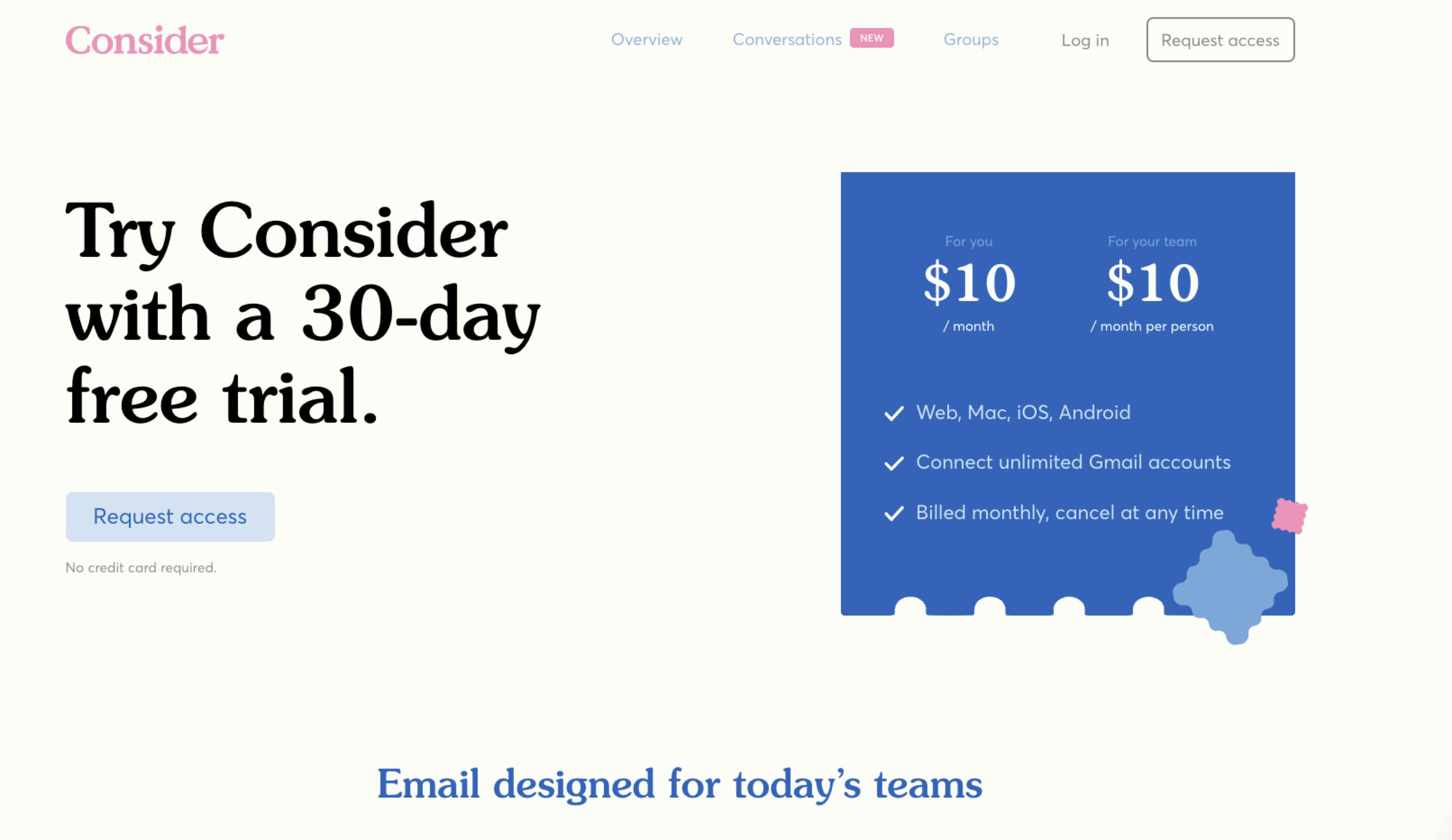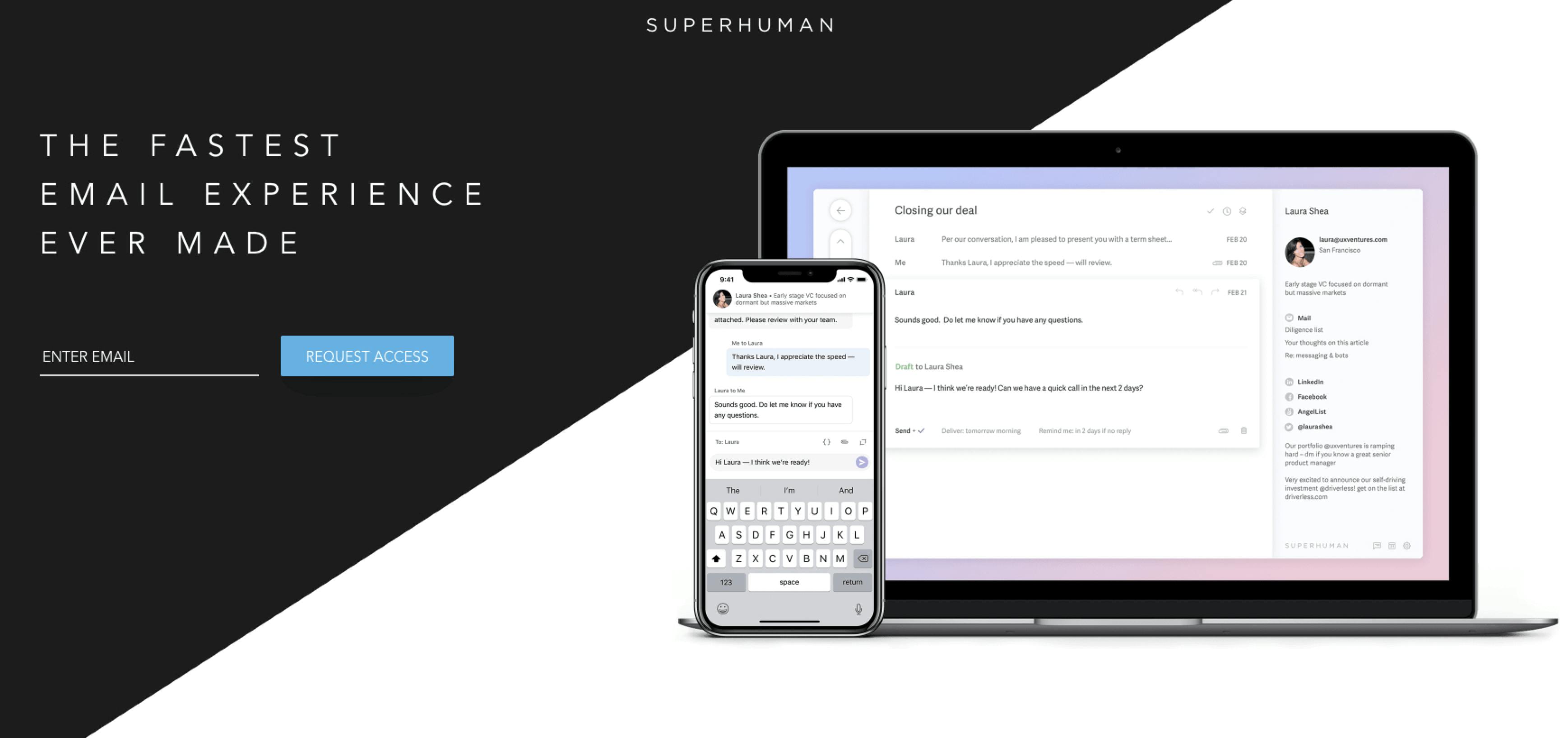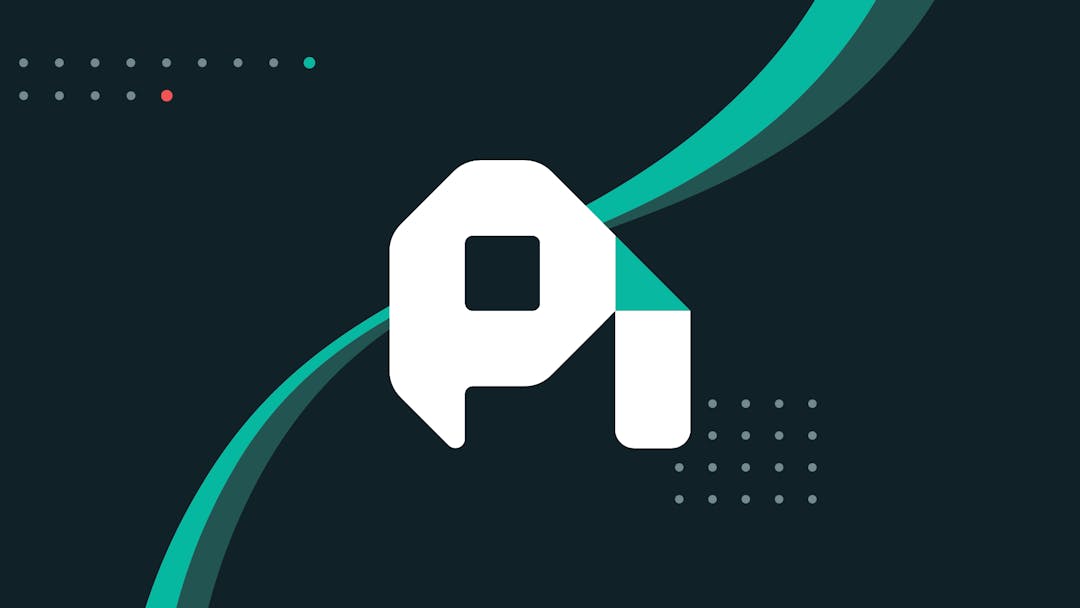These days, every time you look at a pricing page, it seems there are three to five options staring back at you. Sometimes, you can’t help but wish for an easier way to buy SaaS. After all, as consumers, we enjoy many subscriptions and services that come with a simple, one-size-fits-all bill.
It’s no secret that tiered plans are rapidly becoming the gold standard of pricing for SaaS. But is a multiple-choice approach the only option for SaaS businesses seeking to grow in an increasingly complicated market? Is there a benefit in returning to the simpler structure of flat rate pricing?
What is flat rate pricing?
Flat rate pricing is a subscription model that charges users a flat fee per month or year for all features and all levels of access. For example, if you subscribe to the New York Times, you pay a fixed rate per month or year.
Who is using a flat rate pricing strategy?
Better and cheaper technology has enabled the creation of scalable pricing structures, so you’ll rarely see examples of flat rate pricing in SaaS. This model is used primarily by businesses that sell physical products in consumer-facing contexts. Companies that offer delivery and shipping services like FedEx often offer flat rate shipping options that are attractive to small businesses and entrepreneurs. Many consumer-facing subscriptions offer a single subscription price.
But even that trend is changing. Large entertainment subscription services that once used a flat rate pricing model for monthly subscriptions are switching to their own version of tiered pricing plans. Netflix evolved from a flat rate service into a tiered pricing structure—a move that may or may not be sufficient to increase Netflix’s revenue in a saturated market. Spotify, on the other hand, added discounted tiers for Spotify Premium in a bid to increase acquisition and retention.
Basecamp, a popular business management software, is the outlier success story of flat rate pricing in the SaaS world. The reason for this success? The company built flat rate pricing into its core business philosophy.

“The problem with per-seat pricing is that it by definition makes your biggest customers your best customers. With money comes influence, if not outright power. And from that flows decisions about what and who to spend time on,” says David Heinemeier Hansson, co-founder and CTO of Basecamp. “[My co-founder and I decided] we weren’t going to have clients, we were going to have customers. And lots of them. All pretty much equal in their contribution to the business.”
So is Basecamp a unicorn, or can other SaaS companies enjoy the benefits of flat rate pricing?
What are the pros and cons of flat rate pricing?
As with any subscription pricing structure, there are both pros and cons. Flat rate pricing can be a tool for early monetization, but its lack of flexibility and scalability can limit your ability to grow.
Pros of flat rate pricing
The greatest benefits of flat rate pricing are its simplicity and predictability. A flat rate pricing plan is easy to communicate and, therefore, is easy to sell. If your ideal customer values simplicity or needs a straightforward solution for a straightforward problem, flat rate pricing might work well for you.
A perfect example of this is the inbox management software Consider. A recent addition to a crowded market, Consider targets its buyer’s need for a simpler, more focused email client. Flat rate pricing offers simplicity and works well as part of the overall brand. Whether or not Consider keeps this model long-term, this pricing strategy is a great way to establish a solid customer base for a young SaaS startup.

Flat rate pricing can also work well for companies with a narrow product and a single buyer persona. In this situation, a flat rate pricing structure frees founders to focus on monetization, acquisition, and retention instead of tailoring the pricing strategy to diverse personas that don’t yet exist.
Superhuman, another up-and-coming email app, demonstrates this principle well. While it’s still in early access, Superhuman has been generating a lot of media buzz. A major reason for this is the laser focus of the product: making people better and faster at handling email. The company employs a flat rate price structure, charging $30/month. Like everything else about their brand, Superhuman’s pricing communicates a streamlined approach to business.

Cons of flat rate pricing
Flat rate option may work for a few companies, but it’s nearly extinct in the SaaS ecosystem, and with good reason. A one-size-fits-all approach is a good way to make sure none of your users are happy. Businesses owners may choose a competitor that offers a more budget-friendly starter plan, while arger businesses may require more features or bandwidth than your flat rate subscription plan can offer.
Larger businesses also bring added risk to any SaaS using a flat rate pricing model. These businesses have the potential to strain your server resources as well as your customer support resources—and with fixed pricing, they won’t be paying you a penny more for your trouble.
Even Fortune 500 companies, companies primed for high traffic, have experienced disastrous spikes in server costs when not carefully monitoring and managing cloud resource usage. If your resource costs fluctuate from user to user, consider transitioning to a pricing model based on usage.
In addition to lost customers and bloated operating costs, flat rate pricing also limits your potential for future gains. A one-size-fits-all approach may be simple, but it blinds you to your users and the diversity of their needs. Tiered pricing allows you to segment your users and target your development and support efforts accordingly. With flat rate pricing, you lose the ability to align your pricing with your value metric, since you don’t make additional revenue for additional value.
Can I grow revenue with a flat rate pricing model?
The short answer is no. While there are ways to improve your pricing power on a flat rate pricing model, the effort-to-reward ratio really isn’t worth it. Expansion revenue
Scaled or tiered pricing has been proved again and again to be not only more profitable in the short run but also consistent in fueling growth in the long term. Whether you scale your pricing based on features, users, or usage, the verdict is the same: scaled pricing promotes long-term revenue growth, while flat rate pricing quickly stagnates.
What do we recommend?
While a few companies have been able to make flat rate pricing work, there’s a very good reason that almost no SaaS company uses it. SaaS as an industry is all about flexibility and the ability to adapt quickly to change. Compared with that standard, flat rate pricing is like putting lead shoes on a dancer.
Most SaaS businesses simply can't sustain themselves with flat rate pricing, because it doesn't give them the ability to learn from their customers and adapt their strategies, values, and set prices accordingly. At ProfitWell, we recommend tiered or other scaled pricing structures that will give you the flexibility you need to grow in a fast-paced market.
Flat-rate business model refers to the model where products or services are offered at a fixed price, regardless of the number of hours the product/service was used and to what extent.
In the majority of cases, eCommerce businesses rely on flat-rate pricing to set their shipping rates. Because eCommerce shipping charges are usually affected by the box size and weight, shipping method, transportation, and other nuances, online stores often decide to go with the flat rate packaging. It makes calculating the overall costs much easier and more predictable for online shoppers, which ultimately minimizes the abandonment rate.
Flat rate pricing is growing in popularity among freelancers who are looking for the best way to invoice the amount of time they spent working on a particular project. Flat rate pay showed to be a much better way to charge for their services than per hours of work. Fixed rates are easier for clients to understand, plus flat rate work doesn't require keeping detailed accounts of the number of hours a freelancer has spent working.
Download the latest SaaS pricing report. Read about the evolving world of SaaS pricing with insights from industry experts, and gain a better understanding of your company's place in the changing landscape.





